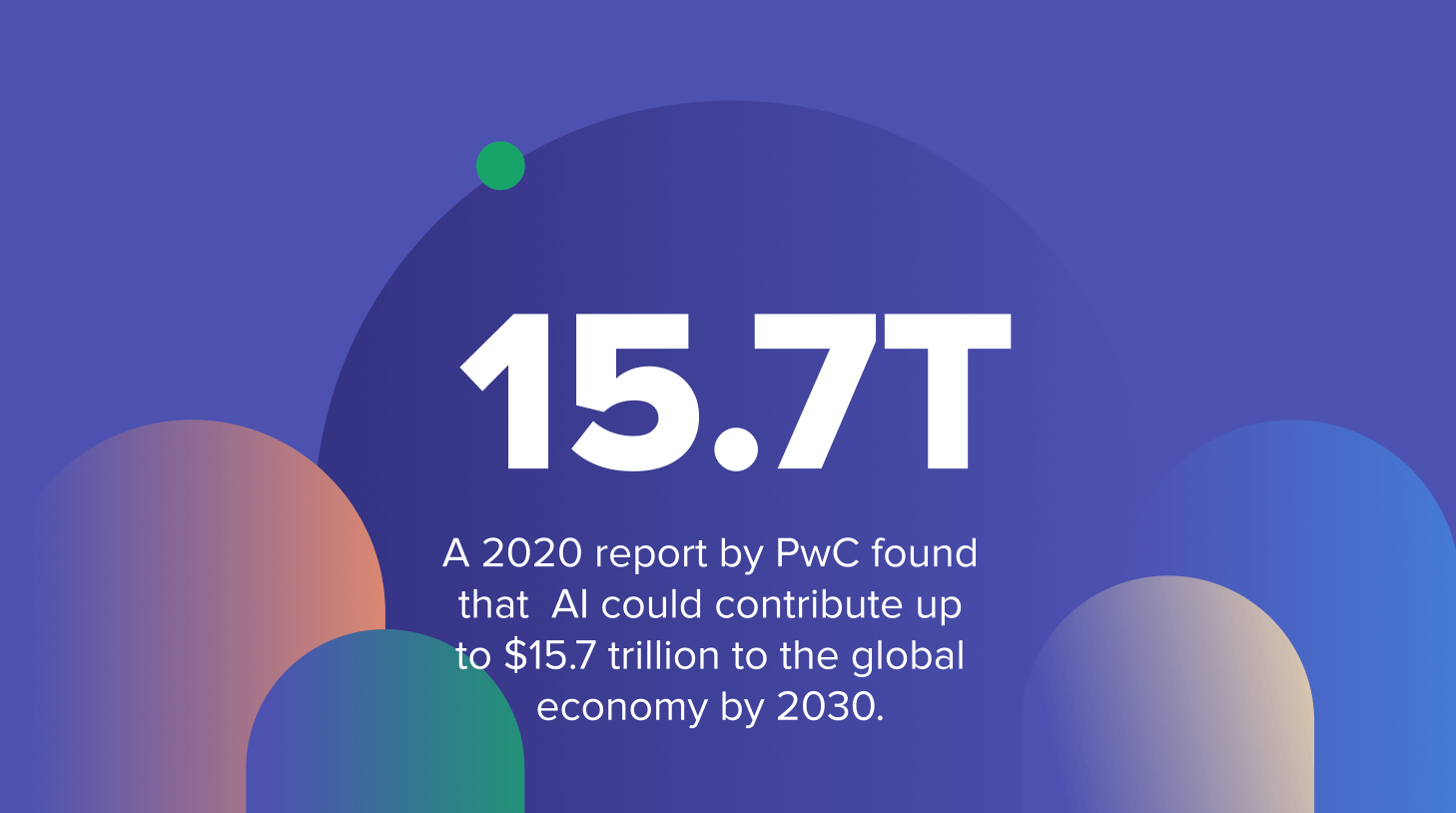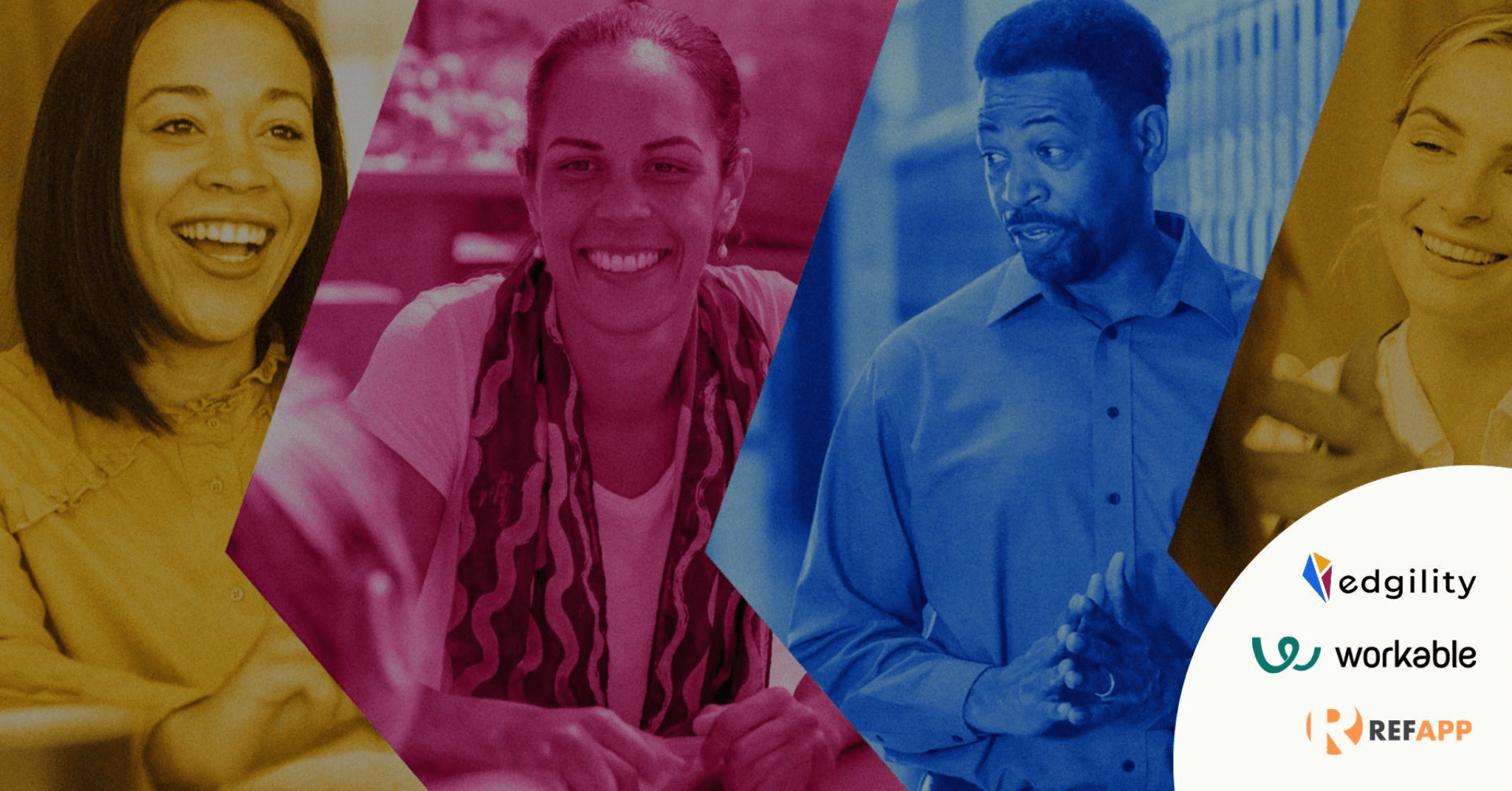How AI can enhance human skills and collaboration at work
Discover how AI is revolutionizing the workplace by enhancing human skills and collaboration, not replacing them. Explore AI's role in personalized learning, decision-making, communication and project management. Learn how to address challenges like job displacement and ethical concerns to create an equitable AI-driven work environment.

Unless you’ve been living under a rock, you know that AI has become a driving force in the modern workplace. It’s dramatically reshaping how we work, communicate and innovate. It’s complementing and enhancing human capabilities in ways that make the science fiction films of yesteryear seem eerily prescient to today.
As an HR practitioner or SMB employer, you’re probably trying to figure out the potential of AI in enhancing human skills and collaboration – especially since this is crucial for staying competitive in today’s rapidly evolving business landscape.
Let’s look at how quickly AI adoption is growing in business. According to a 2022 report by McKinsey & Company, roughly half to three-fifths of all businesses reported that they adopted at least one AI technology in at least one function in annual studies dating back to 2017.
This is probably obvious: this percentage will likely increase dramatically in 2023.
This widespread adoption underscores the growing recognition of AI’s transformative potential and its ability to increase efficiency, productivity and innovation.
But here’s the thing – AI in the workplace isn’t about mere automation of processes. It’s not always about plug-and-play so you can go to the beach.
Rather, when implemented effectively, AI can empower employees to develop new skills, foster effective collaboration and make better-informed decisions. A 2020 report by PwC found that AI could contribute up to $15.7 trillion to the global economy by 2030, with much of this value stemming from its potential to enhance human capabilities.
So, it’s worth a deep dive into how AI can enhance human skills and collaboration at work.
Contents
AI improving human skills
Again, AI isn’t about mere automation and optimization. It’s also going to enhance human skills – including personalized learning and personal development, plus improved decision-making. Your business can leverage AI’s capabilities to empower your colleagues to grow, innovate and shine in their roles.
Personalized L&D
AI-powered learning platforms, such as LinkedIn Learning and Coursera, enable employees to access customized learning experiences tailored to their unique needs and goals. AI can now analyze existing skillsets, job roles and performance data to recommend relevant courses and resources to help employees grow professionally.
This is huge in terms of employee engagement and retention. A 2018 LinkedIn survey found that 94% of employees would stay at a company longer if it invested in their professional development. And a TalentLMS survey in late 2021 found that 62% of US tech workers are motivated by training and learning. The payoff is clear.
More so, upskilling to meet new tech developments at work is crucial for success – a 2020 World Economic Forum (WEF) report predicted that by 2025, 50% of all employees will require reskilling due to the adoption of new technologies like AI. Soft skills such as agility, adaptation and autonomous work are becoming even more important.
Decision-making with data-driven insights
Decision-making is another area where AI can enhance human skills. Business decisions are increasingly data-driven. AI analytics tools, such as IBM Watson and Microsoft’s Azure Machine Learning, can process vast amounts of data quickly and accurately, helping employees more quickly make informed decisions based on lightning-quick AI-driven insights.
The benefits of AI-enhanced decision-making are significant. First, AI-driven operations improves accuracy according to a 2022 McKinsey study, leading to better business outcomes and a more competitive edge. This can have far-reaching effects from optimizing supply chain management to improving customer satisfaction and driving revenue growth.
AI may have some limitations in terms of replicated human bias – more on that below – but when used wisely, it can also promote more unbiased decision-making. It can reduce and even eliminate cognitive biases that cloud human judgment, making for more objective, data-driven decisions including in HR.
For example, AI-powered recruitment tools like Workable ensure unbiased hiring processes. For example, its Video Interviews functionality creates interview questions that autopopulate across all interviews for a uniform experience, and its AI Recruiter surfaces candidates based on qualifications and experience. Its AI-created job descriptions are also free of bias.
AI fostering workplace collaboration
As the modern workplace continues to evolve, effective collaboration has become more important than ever. AI tech can also facilitate communication, as well as streamline project management and workflows.
Let’s look at each in depth:
Communication
AI-powered communication tools are revolutionizing how teams collaborate. AI-enhanced tools like SuperNormal’s AI-driven notetaking functionality can significantly improve communication and collaboration among team members.
For example, SuperNormal features automatically transcribes and analyzes meeting content, making it easy for participants to review, share and reference key points discussed. This capability not only enhances communication but also helps to ensure that remote and distributed workers remain engaged and informed, even if they’re unable to attend a meeting in real time.
Chief CX Innovation Officer Jonathan Shroyer at Arise Virtual Solutions is a huge proponent of AI tools in communications, citing emerging tools include AI support chatbots, repeat process automation, AI agents and big data bots in this Forbes article.
Project management and workflow
Project management is another area where AI-enhanced tools such as Asana, Trello and Jira can streamline workflows and improve team collaboration through the automation of tasks, identification of bottlenecks and future-proofing against project risks.
For example, Asana’s workload feature uses AI to analyze team members’ capacity and automatically allocate tasks, ensuring that work is distributed evenly and preventing burnout. Similarly, Trello’s AI-powered ‘Butler’ automates routine tasks, enabling team members to focus on higher-value activities and collaborate more effectively. Atlassian has incorporated predictive machine learning tools into its Jira and Confluence softwares.
The impact of AI on project management is significant. Harvard Business Review writes extensively about how AI will transform project management. In their article, they say that about $48 trillion are invested in projects annually, but only 35% of projects are considered to be successful according to Standish Group. And according to a Gartner report, 80% of project management tasks will be run by AI by the year 2030.
That’s a lot of money at stake. If AI-driven project management can make processes more efficient and productive, shortening project durations and reducing errors, it’s a no-brainer to incorporate AI and machine learning capabilities to foster team collaboration.
Overcoming challenges of AI implementation
It’s not all roses, though. There are challenges that you need to bear in mind when implementing AI to support human skills and collaboration at work. Concerns about job displacement and ethical considerations are pressing issues that you must address as you bring AI into your everyday operations.
Job displacement
One of the most significant concerns surrounding AI implementation is the potential for job displacement. While AI can automate repetitive tasks and improve efficiency, this automation has raised fears of job losses and workforce disruption. For instance, a new World Economic Forum report finds that a quarter of all jobs will be impacted over the next five years with AI at the forefront of those changes.
Here’s a spin on it, however – that same WEF report notes a net positive in jobs over the next five years due to these new developments. It’ll be tumultuous, but in the end, it’s a shift in jobs rather than a reduction in job opportunities.
However, to overcome redundancy, companies will need to adopt the right strategies and invest in workforce development to ensure they stay competitive in the business landscape. Rather than simply seeing AI as replacing humans in work processes, AI can be viewed as a complementary tool that enhances human skills. By focusing on the opportunities that AI creates, organizations can unlock the technology’s full potential and ensure a smooth transition for their workforce.
MIT’s Paul McDonagh-Smith is a supporter of this mentality, highlighting the merger of technological prowess with human drivers to boost your organizational ‘creativity quotient’. In a recent webinar, he discussed how human and machine capabilities can work in a mutually complementary fashion rather than compete with each other.
So what does that mean? Change does not need to be scary. It can be seen as an opportunity. Employees can be reskilled and upskilled so they’re equipped with the resources and talents they need to adapt quickly to their evolving roles and the technologies that come with them. Those who are agile, prepared and continually learning will get ahead.
Data backs this up. The WEF reports that 50% of all employees will need reskilling by 2025 as adoption of workplace technologies grows – with the bulk of those skills focused around problem-solving and critical thinking.
If you proactively address those needs in your business, you can mitigate those job displacement concerns in your teams. Encourage them to grow and develop, and support them to do so, so your business can be set for success in the age of AI.
Ethical use of AI in the workplace
As AI becomes increasingly integrated into the workplace, ensuring its ethical use is paramount. You’ll want to address potential issues related to employee privacy and algorithmic bias to ensure a responsible and equitable AI-driven work environment.
To protect employee privacy, you should establish clear policies and guidelines regarding the collection, storage and use of personal data. By being transparent about how AI technologies process employee data and implementing robust security measures, businesses can build trust and mitigate privacy concerns.
Addressing algorithmic bias is another essential element of ethical AI use. AI systems can inadvertently perpetuate existing biases if they are trained on biased data or designed without considering potential biases. Amazon’s gender-biased hiring using AI is one of the more prominent examples, as well as the infamous “racist soap dispenser” that made waves online some years back.
To counteract these issues, SMBs should invest in diverse AI development teams and implement bias-detection and mitigation strategies in their AI systems. By doing so, they can promote fairness, inclusivity and diversity in the workplace.
Finally, maintaining human oversight is crucial for the ethical use of AI. While AI can augment human decision-making and enhance productivity, it is essential to ensure that humans remain in control and responsible for critical decisions.
AI is the great empowerer
AI in the workplace will revolutionize how we work, collaborate and innovate. It won’t replace humans – it’ll simply enhance human skills. That is, if we empower employees to grow professionally and adapt accordingly to the changing demands of the modern work environment.
Organizations can also incorporate AI tools to foster workplace collaboration, facilitate communication, streamline project management and optimize workflows. At the core of all this? The human aspect.
There’s a powerful saying that’s making the rounds right now: AI will not take your job, but people who use AI will. Keep that in your mind as you move forward – AI isn’t a threat. It’s a great empowerer.
Humans now get from point A to point B faster using machines rather than horses, and can build more quickly with nail guns and electric saws rather than hammers and hacksaws. You’ll find that with a balanced approach and a well-developed human development strategy that incorporates AI, you can continue to thrive as people and as businesses.
Frequently asked questions
- How does AI improve personalized learning and professional development in the workplace?
- AI-powered learning platforms offer customized learning experiences, helping employees grow by analyzing skillsets, job roles and performance data.
- Can AI enhance decision-making in the workplace?
- AI analytics tools process vast amounts of data quickly and accurately, providing data-driven insights for faster and more informed decision-making.
- How does AI foster workplace collaboration?
- AI-powered communication tools improve collaboration by automating notetaking, transcribing meetings, and analyzing content. AI-enhanced project management tools streamline workflows and automate tasks.
- How can businesses address concerns about job displacement due to AI?
- Businesses should consider investing in workforce development and reskilling, to ensure a smooth transition and help employees adapt to evolving roles and technologies.
- What are some key ethical considerations when implementing AI in the workplace?
- It's essential to address employee privacy, algorithmic bias and maintain human oversight to ensure a responsible and equitable AI-driven work environment.





